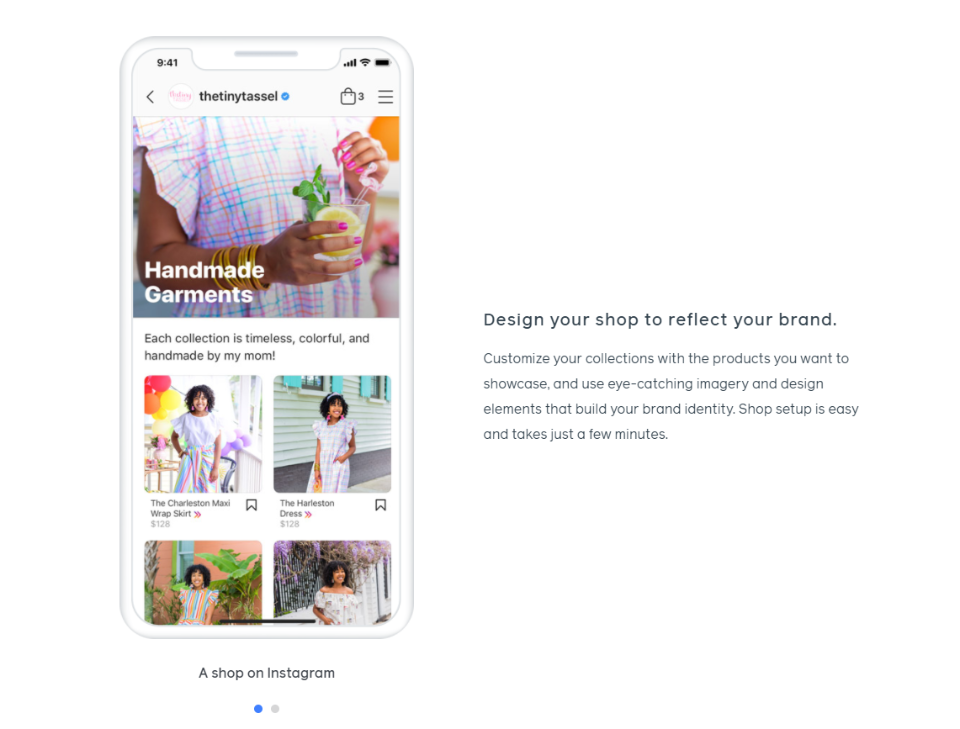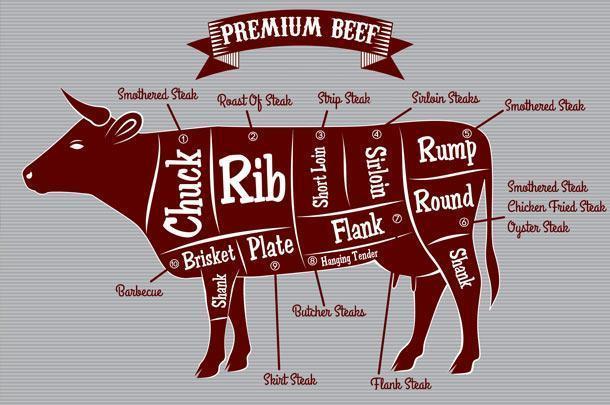Social Commerce a Simple Guide for Beginners
Social Commerce a Simple Guide for Beginners
Social Commerce is one of the most popular and fastest-growing trends in the world of online sales. Although the principles are similar, it’s different from traditional eCommerce. As we’ll see, there are lots of reasons to pay attention to Social Commerce.
In this simple guide for beginners we’ll discuss what Social Commerce is and isn’t, see how it began, and explore its advantages. We’ll also share some guiding principles to help you get started.
What is Social Commerce?
Social Commerce is the use of social networks and other platforms with social interaction for eCommerce transactions. Rather than a link to an online store where the transaction can take place, the purchase is made through the social network or platform.
The sales activity takes place outside of the retailer’s website, on social networks such as Facebook, Instagram, or Pinterest. The entire sales process, from cultivating the sale all the way through the shopping cart, is completed on the social network. This is different from eCommerce, which takes place on the company’s website.
Some make a strong distinction between Social Commerce and Social Shopping with “Commerce” referring to how vendors use social networks and “Shopping” referring to the activity of the shopper. Focusing on these distinctions can help companies build systems to improve them. Regardless of how deep you want to go into making these distinctions, they’re both related and work together.
A Brief History of Social Commerce
The term was coined by Yahoo! in 2005 to describe a set of social shopping tools such as user-generated content, user ratings, shared pick lists, etc.
The concept was further developed by David Beisel and Steve Rubel. David Beisel focused on user-generated advertorial content on e-commerce sites. Steve Rubel focused on collaborative e-commerce tools that would allow shoppers to get advice from people they trust, and purchase products and services. Together, this increases trust and sales.

Facebook opened a marketplace in 2007. A Buy button was added in 2014. Payments and shoppable pages were added in 2015. Facebook for Business helps you set up a shop on the Facebook and Instagram platforms.

Instagram added a shop button in 2015 followed by product tags in 2016. Shopify and BigCommerce integrations were added in 2017. Shoppable posts were added in 2018. This example shows an Instagram shop that you can make using Facebook for Business. You can make a similar shop for Facebook.

Pinterest added buyable pins in 2015 and a shopping cart in 2016. Pinterest Business helps you set up a business account so you can start selling through the Pinterest platform.
16 Advantages of Social Commerce
There are lots of advantages to selling socially, here are the big ones:
1. Engagement
It helps companies engage with customers. It places the brands where the customers are and provides them with an easy way to interact.
2. Trust
The ability for the customer to interact with the company helps build trust with the company. Customers get to know the people in the company, have conversations with the company representatives, get their questions answered, and discuss feedback. It’s easier for potential customers to trust a company when they can see feedback and recommendations from others.
3. Sharing
Social Commerce makes it easy for customers to share news about their purchases. They can share information with their friends or audience and make recommendations about products and services.
4. Reviews
Customers can easily leave reviews and ratings of products and the company. This helps build trust in the products and authority in the brand.
5. Community
Customers can easily interact with each other about the brand and products. This can build a community bond around the brand, which is great for the company and the customers. Customers can feel accepted, create trends, follow trends, and follow influencers, or become an influencer for the type of product or service.
6. Social Proof
Social proof builds trust in the company. When potential customers see reviews, feedback, ratings, positive comments, and discussions around the brand, they’re more likely to trust making a purchase.
7. Trends
Trends are easier to find and follow on social networks.
8. Marketing
Companies can use marketing techniques to help drive sales and awareness. Techniques include:
- Social media graphics
- Video to show products
- Informative posts
- Voting on product choices
- Polls
- Asking user’s to share photos and comments
- Sharing user’s posts
- Celebrity endorsements
- Promotions
- Giveaways
- Direct links to a shopping cart
9. Targeted Advertising
Companies can easily target their audience on social platforms with ads based on their activity and preferences. Social platforms provide extensive advertising tools that work well with commerce.
10. Demand
Social Commerce makes it easier to understand the demand for a product. Potential customers are more likely to purchase if a product is in high demand or if it’s difficult to find. They don’t want to miss out on something their friends are enjoying. If it’s scarce there is a higher value assigned to the product in the mind of the buyer and it will feel more unique or special to them.
11. It’s Where Customers Are
Rather than trying to lure potential customers away from a social media platform to your website, Social Commerce allows you to sell to them where they already are- on the social media platform. This makes it much easier to find your target audience and makes it easier for them to find you. It also means that many potential buyers will discover your products that might not have any other way.
12. It’s Not Just a Sales Platform
Social media includes sales, but it’s a lot more than that. Potential buyers that may not be looking for products are there when they wouldn’t be on a sales website. They’ve seen the ads, the shares, the likes, and the comments. They’ve been warmed up to the idea of the product. They can be sold to even if that’s not why they’re there.
13. Customers Can Buy Through the Social Network
You’re not asking a potential customer to leave the safety of the social platform and go to your website to make a purchase. This makes it easier to sell to them and helps build trust in the sale.
14. It Makes Online Shopping a Social Experience
Typical online shopping is a solo experience. It leaves something to be desired when compared to going shopping with your friends. Social Commerce adds the social experience to the shopping experience.
15. Popularity
Social Commerce is a popular choice for selling online. In 2020, the global Social Commerce market was estimated to be $86.4 billion. It’s projected to be $604.5 Billion by 2027. This is a stunning number of sales and growth potential. Facebook has reported some staggering Instagram numbers with 83% of buyers discovering new products or services, 81% researching products or services, and 80% deciding whether to buy a product or service.
16. Convenient
The convenience of Social Commerce is one of its greatest strengths. The customer can research a product and purchase without having to leave their favorite platform, and immediately go back to what they were doing on that platform.
5 Principles of Social Commerce
Lots of Social Commerce principles have developed over the years that can help you start and grow your social shop.
1. Optimization
Use the data from your social platform to optimize the buyer’s experience. This includes colors, text, images, etc. Make sure the images and text load fast. Design for mobile-first and test on multiple devices.
Images – Use vertical images. Most users are browsing social platforms on smartphones in portrait mode. Pinterest recommends a 2:3 ratio to keep the image from truncating. Use an image that customers can understand at a glance.
Text – Create short copy with no more than 100 characters for the title and 500 characters for the description.
Logo – Be sure to use your logo, but don’t place it in the lower right corner. That area can be covered with product icons.
Overlay – Add an overlay to make the product stand out.
Video – Lead with a clear hook. Keep videos between 6 and 15 seconds. Use text overlays or captions for those that watch with the sound off.
Localization – Translate the text for each language you’re targeting and post each as a different ad.
2. Create Sharable Content
Create the type of content that your followers want to share with their friends. I recommend content that adds value rather than “I’ll bet you won’t share this” and “share if you find” content. I ignore those myself.
3. Audience Awareness
Keep in mind that not everyone on a social platform is looking to purchase a product and not everyone wants to be sold to. Influencer Marketing Hub reported that 18% of Generation Z leave a social platform if it’s too commercialized.
4. Create Collections
Build collections of similar products around seasonal events, trends that you’ve noticed from your followers, etc.
5. Metrics
Companies use standard social media measurements to analyze metrics such as the Return on Investment (RIO), Reach, and Reputation. Companies can also look at likes, retweets, and shares to measure consumer interaction. Use this to improve your sales content.
Ending Thoughts
Social Commerce is the natural progression of online buying. As more people spend time on social networks and seek buying advice from friends, more companies will take advantage of what these networks can offer.
This doesn’t mean that every online store should sell through a social platform. Setting up a sales platform on any network is an investment. It is something to consider, though. It’s easy to see how popular it already is and it’s projected to explode in the near future.
We want to hear from you. What do you think about Social Commerce? Let us know in the comments.











